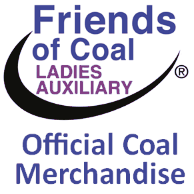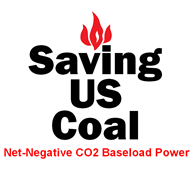
 











|
Signature Sponsor


By Matt Kasper and Joe Smyth
July 16, 2021 - As negotiations continue over a climate and energy bill in Illinois, misleading online advertisements from a group called “Voices for Cooperative Power” have appeared. The ads running in Illinois political media outlets claim that legislators are on the verge of closing the Prairie State Energy Campus, a “state-of-the-art coal plant” that has “$1 billion of emissions controls.” While state lawmakers are working on how to equitably phase out coal and gas power plants in the state, the advertisements imply that the Prairie State Energy Campus should remain open because it is “highly efficient” and “came online during the Obama-Biden Administration.”
In truth, the $5 billion 1,600 MW coal plant located in Marissa, IL – about 50 miles from St. Louis – emits more carbon dioxide, methane, sulfur dioxide, and nitrogen oxides than any other power plant in the state. These pollutants are greenhouse gases and contribute to global warming while causing severe health and environmental problems. Prairie State was also the eighth largest carbon polluter among power plants in the United States in 2019, when it emitted 13,859,542 metric tons of carbon dioxide.
 Voices for Cooperative Power, which is behind the online advertisements, is a new advocacy effort from the National Rural Electric Cooperative Association (NRECA) – the trade association for electric cooperatives. NRECA launched Voices for Cooperative Power earlier this year. The website, which was registered on February 24, 2021 and went live on May 6, 2021, features NRECA policy priorities along with images of electric cooperative members – though some are simply stock images available for purchase. The banner image used on the main page of the Voices for Cooperative Power website is a stock photo available at Shutterstock, titled “Group of Diversity People Teamwork Together.” Another image on the main page of the website is also a stock image, titled “Friendly female colleagues having good relationships, pleasant conversation at workplace during coffee break, smiling young woman listen talkative coworker, discussing new project, talking in office.”
The advocacy effort replaces NRECA’s “Our Energy, Our Future” program, which campaigned against President Obama’s Clean Power Plan as well as other EPA proposed rules. The Voices for Cooperative Power Twitter handle was renamed from the original “Our Energy, Our Future” account, which explains the account start date of 2009, and older posts frequently link to that effort’s now-deleted website and other social media channels.
 Voices for Cooperative Power describes itself as a “network of electric co-op members working together to influence elected officials who are making energy policy decisions that impact our co-ops and, by extension, our way of life.” NRECA noted in a blog post that it launched the advocacy effort to “modernize and improve efforts to influence Congress and the White House.” Louis Finkel, NRECA’s senior vice president of government relations, said, “We’re connecting cooperative communities through the use of social media to have a thoughtful and sustained dialogue about issues of importance to them and to the future of their cooperatives.”
In addition to running misleading ads in Illinois, the website emphasizes electric cooperatives’ efforts to reduce emissions, including a deceptive claim that “nearly two-thirds of [cooperative] power comes from low- or no-emission sources.” NRECA’s figure appears to include fossil gas plants as a “low- or no-emission source.” Gas typically emits half the carbon of coal when burned, but that’s still far from no emissions, and these plants rely on a supply chain of methane, a potent greenhouse gas, prone to leaking.
Electric cooperatives also remain more reliant on coal than the US electricity sector as a whole. Coal accounted for 32% of electric cooperative retail sales in 2019, according to an NRECA fact sheet, with gas increasing to 32% as well that year; fossil fueled power plants account for nearly two-thirds of the industry’s power supply.
|
 










|